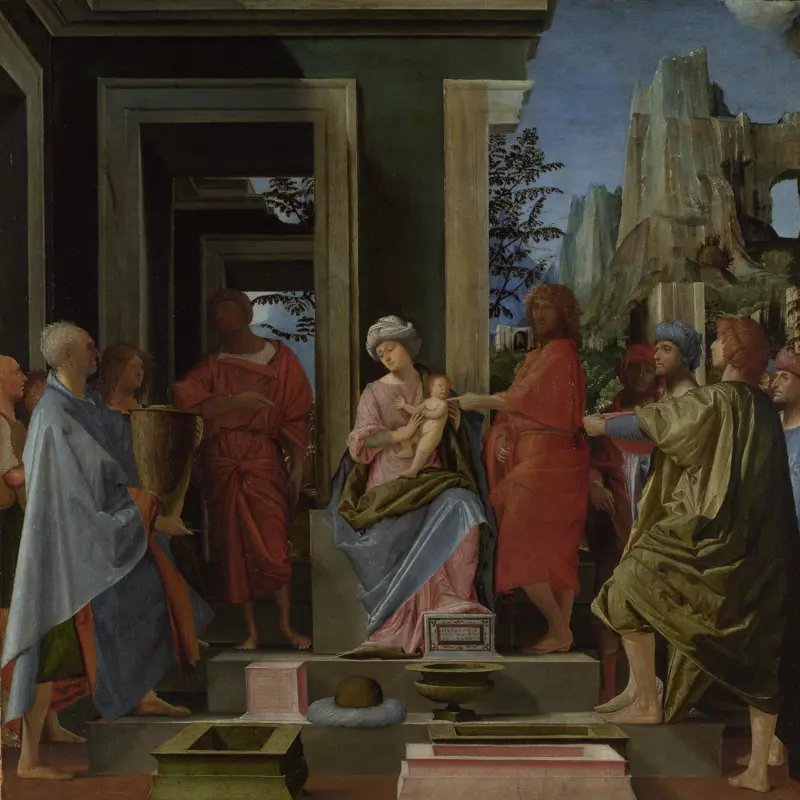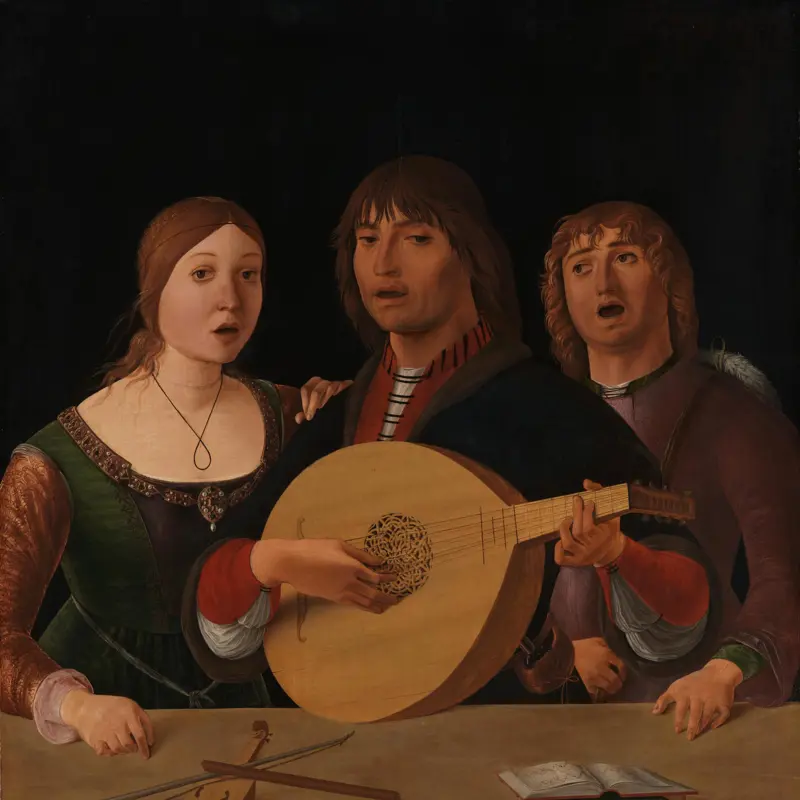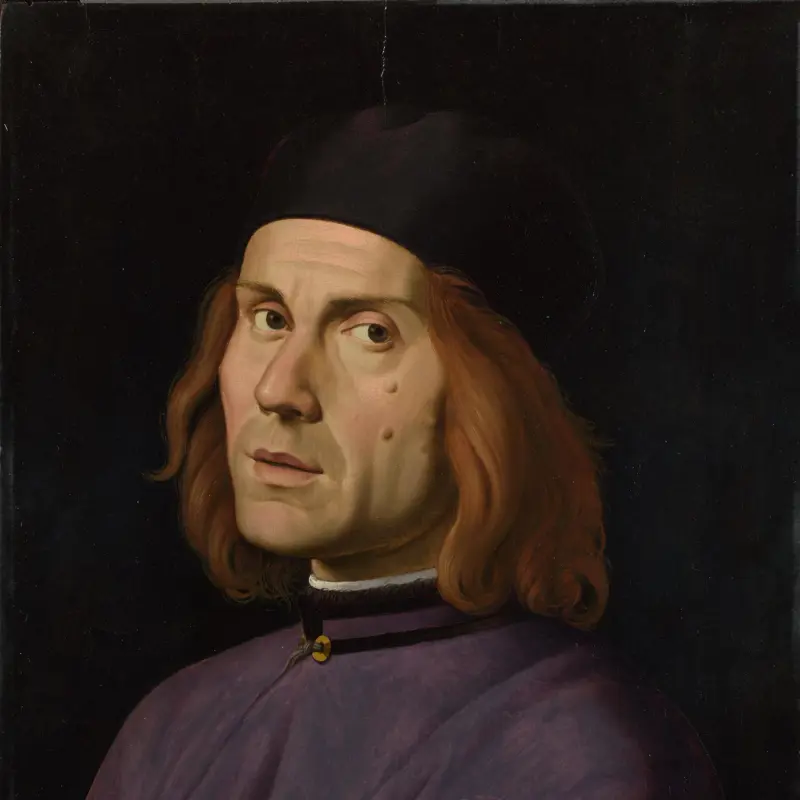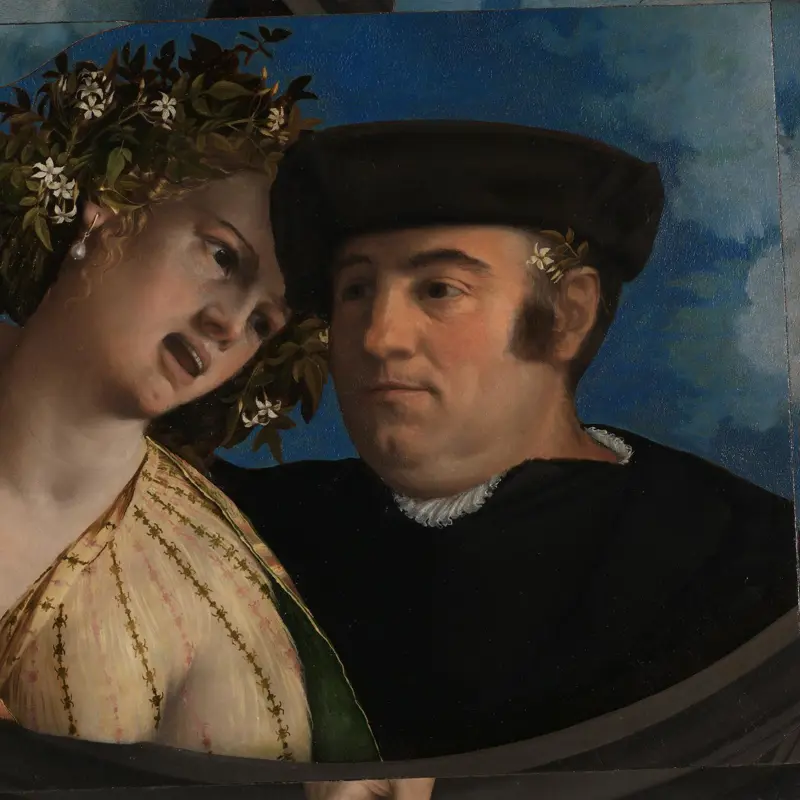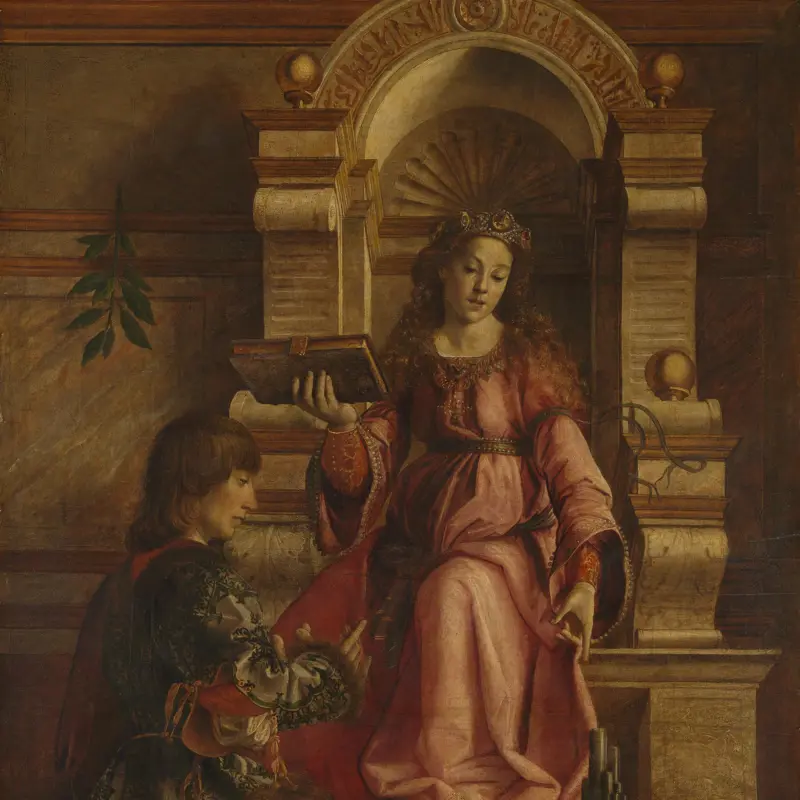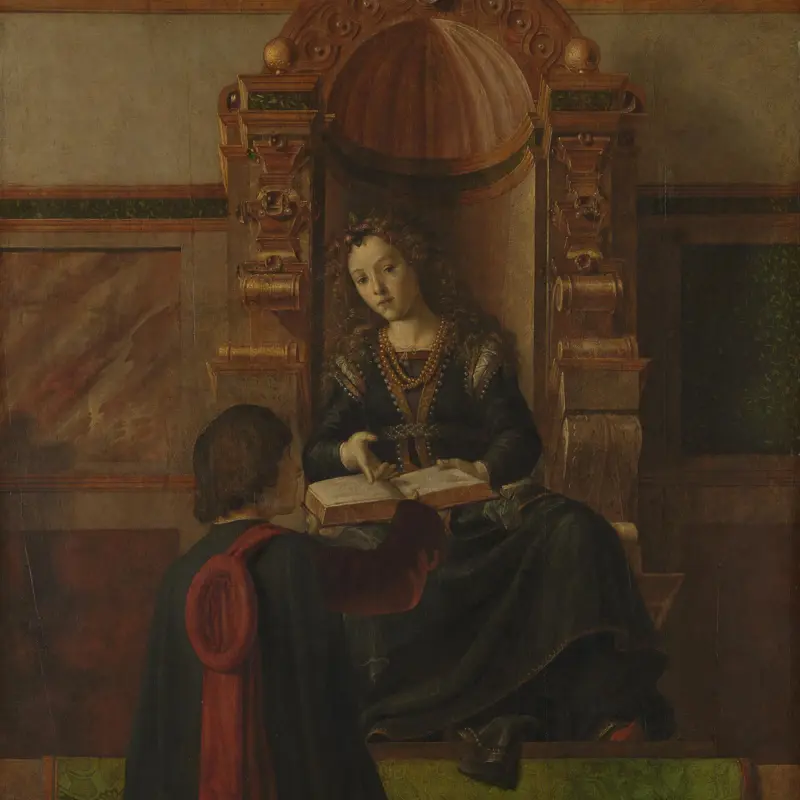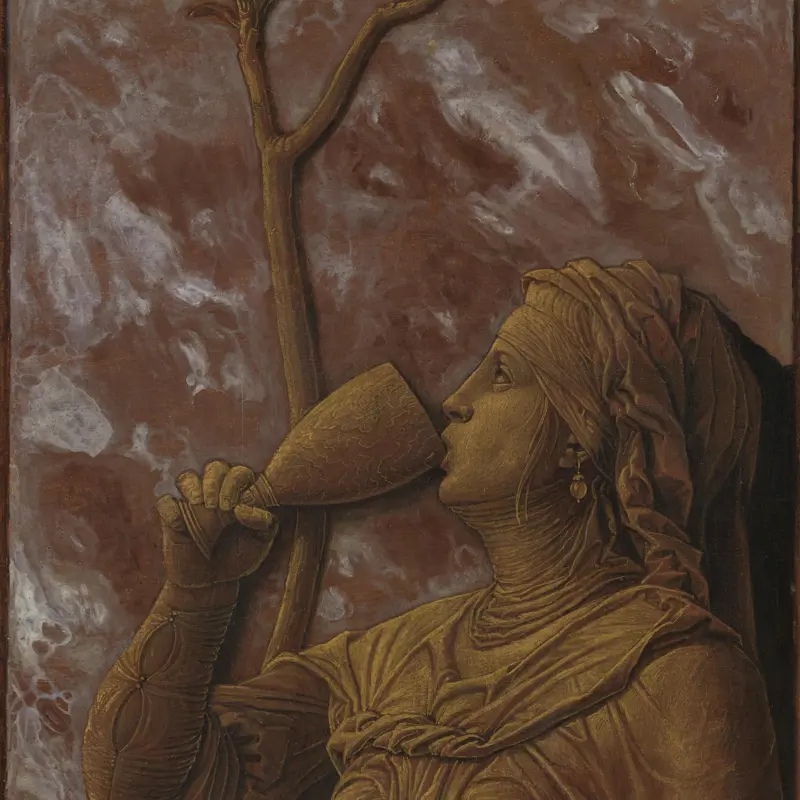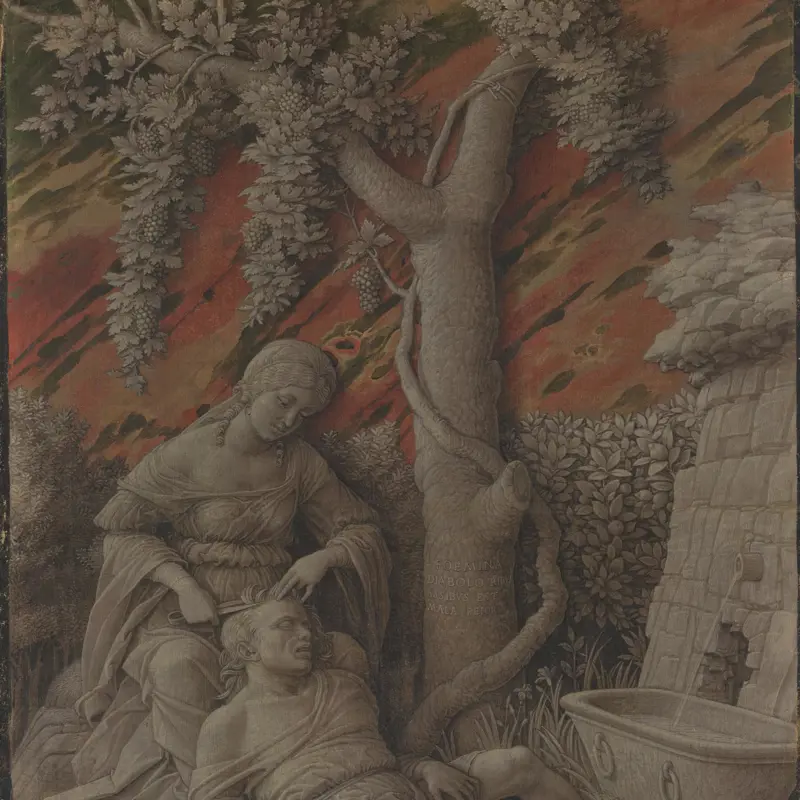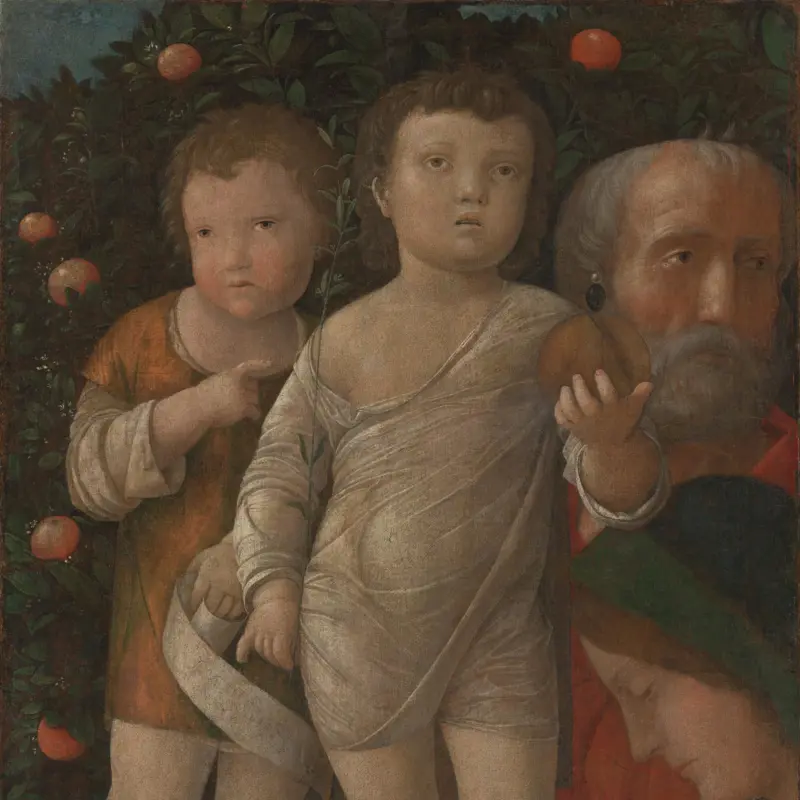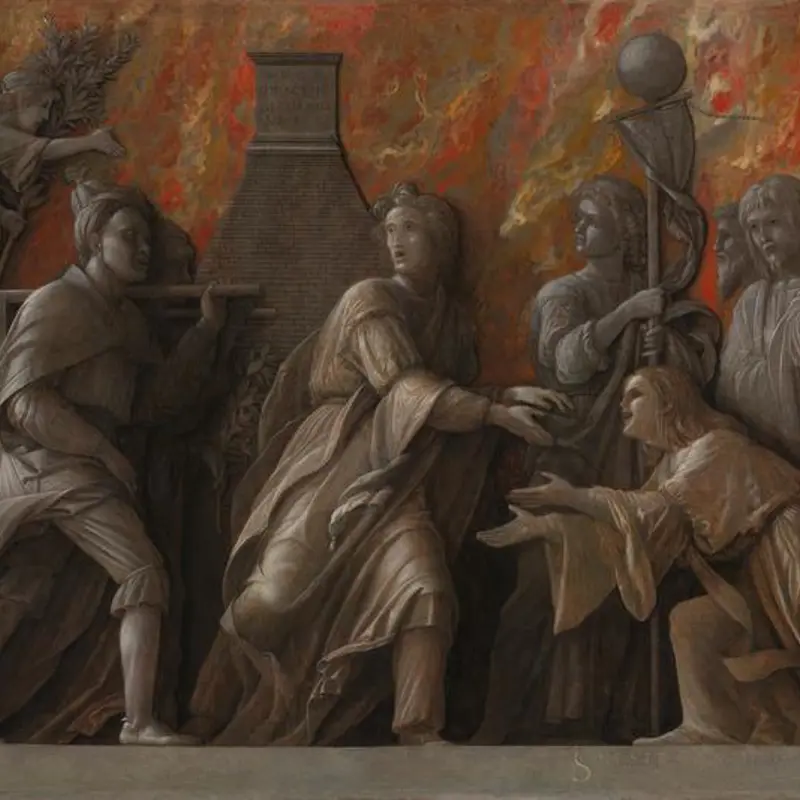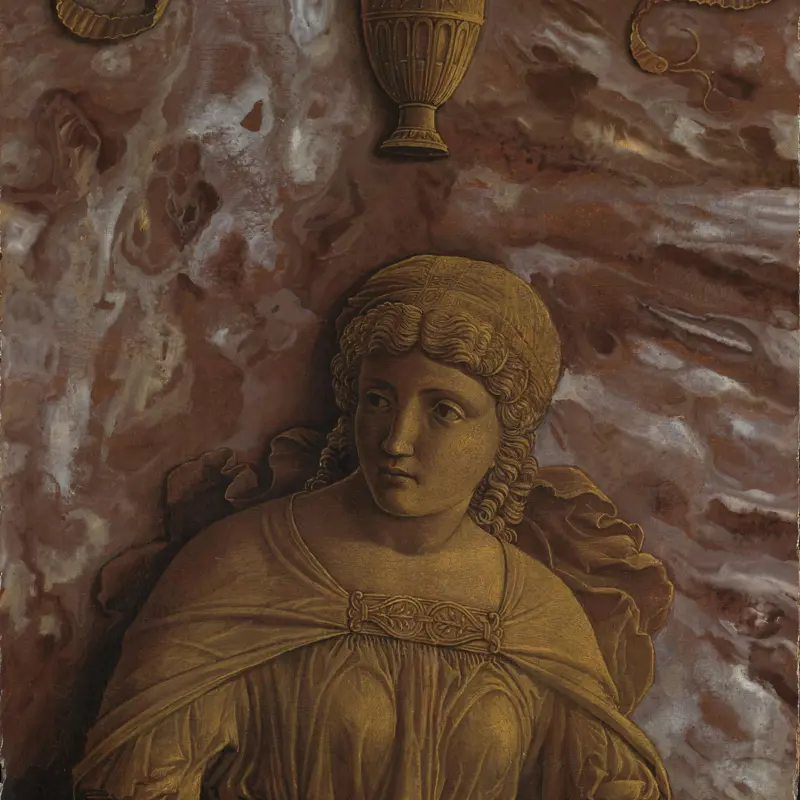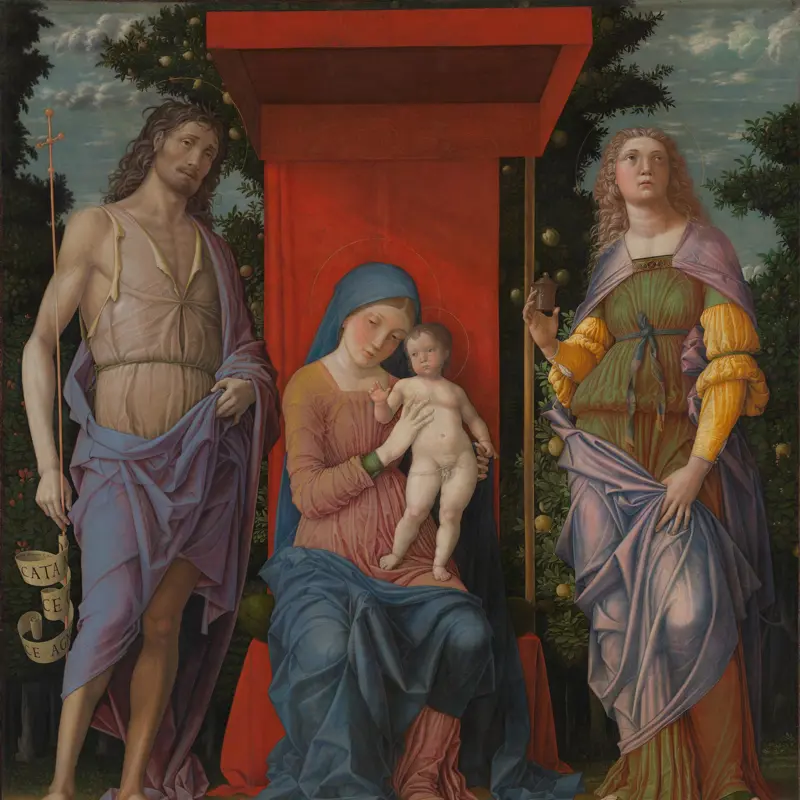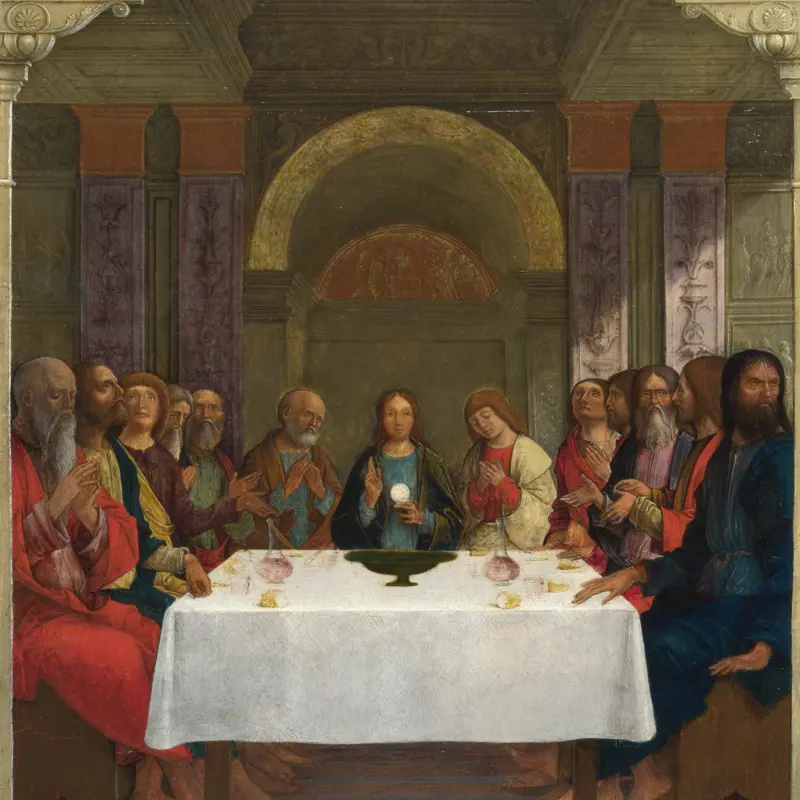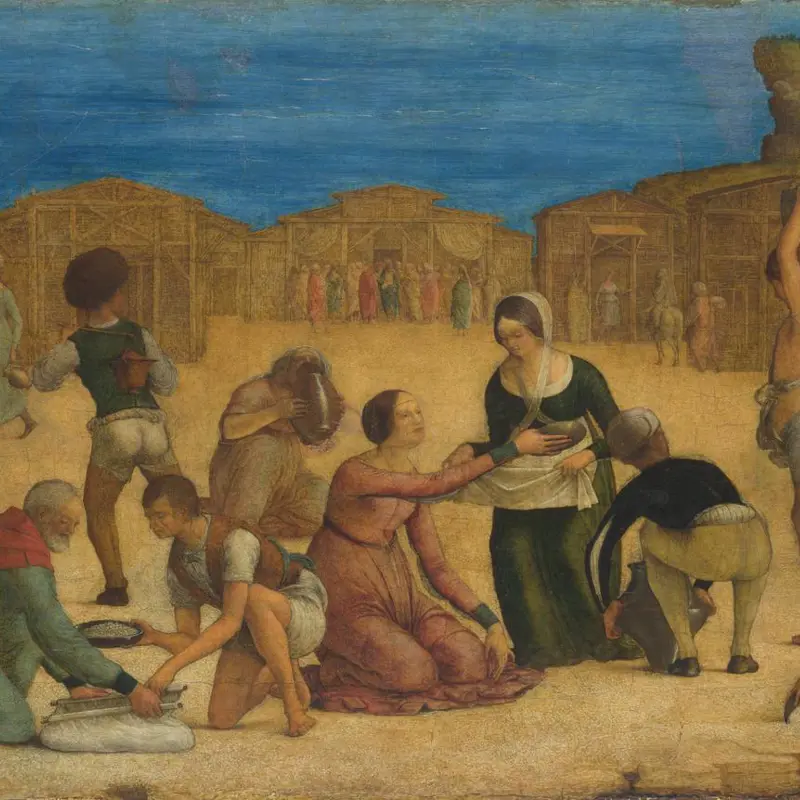The pictures in this room were painted for learned patrons connected to the courts of Urbino, Mantua, Ferrara, Milan and Bologna, all city states in northern Italy. At the court, intellectuals enjoyed images of scholarly subjects that were sometimes deliberately obscure in their meaning. They were intended to invite contemplation and discussion. Painters worked closely with poets and other courtiers to create new types of images. These paintings reflected humanist thought and often drew inspiration from classical texts.
The courts were home to some of the leading painters in northern Italy. Andrea Mantegna spent over 45 years as court artist to the Gonzaga family, who ruled Mantua. He was much admired for his powers of invention and his ability to bring to life the ancient worlds of Greece and Rome.
Ferrara, the seat of the Este family, was home to several generations of highly original painters, including Cosimo Tura, Ercole de’ Roberti and Dosso Dossi. Other artists moved between courts. Lorenzo Costa probably trained in Ferrara before working for the Bentivoglio family in Bologna. He later succeeded Mantegna as court artist in Mantua.



